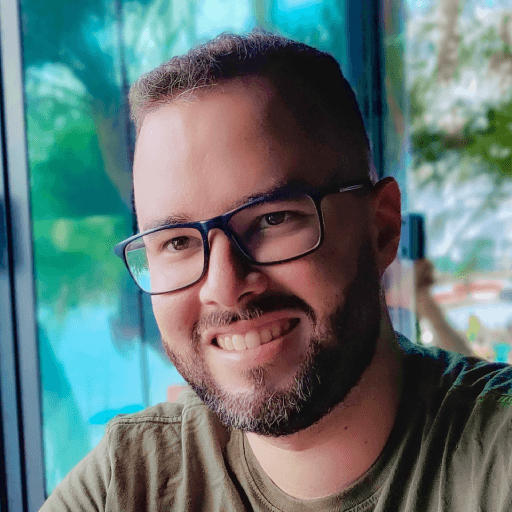Night in the Cerrado
About the project
When we look at the night sky from a big city like Brasilia, we see more than just stars and constellations; we see the impact of our modern civilization. Streetlights, buildings, and cars create an intense glow that obscures the view of the Sky. So, we wondered: What would it be like to observe the night sky away from the city's interference? Are we erasing part of our history and culture by illuminating our nights? How much does light pollution affect our ability to observe the Cosmos? How can the experience of a starry sky influence our understanding of ourselves and our place in the Universe?
As we move away from the city of Brasilia and travel towards Chapada dos Veadeiros - GO, we embark on a journey to reclaim the Sky and the stars. As the city's lights fade, the sky reveals its true beauty and magnitude. The Night in the Cerrado project invites us to reflect on the relationship between the impact of city lights and the night sky. Through photography, we embark on a journey to discover the true Sky of the Cerrado.
Astrophotography, which involves taking photos of the night sky, allows us to capture the sky in its true nature and complexity, revealing more details of stars and celestial bodies. To capture a clearer sky, we had to move away from artificial lights, as they obscure the brightness of the stars and the Sky itself. Therefore, we made stops every 50 km heading north of Brasilia, towards the outskirts of Alto Paraíso de Goiás, finishing at the 200 km mark from Brasilia.
Light pollution is the excess or misuse of artificial lighting that interferes with the visibility of the night sky. This phenomenon occurs mainly in urban areas, where artificial lighting, such as streetlights, cars, billboards, and other light sources, creates a glow that obscures the view of stars and other celestial bodies.
The improper use of public lighting and other light sources contributes to light pollution, especially when light is directed upwards or to areas that do not need illumination. Although LED lights, currently used, are more energy-efficient, their improper vertical use intensifies the glare of the night sky, obscuring the view of stars. This incorrect direction of lighting not only wastes energy but also directly interferes with the ability to observe the Sky, erasing its natural beauty and disturbing the balance of nocturnal ecosystems.
Light pollution influences your electricity bill and the public lighting tax you pay. Inefficient and poorly directed lighting wastes energy, which increases costs for both taxpayers and municipal governments. In Brazil, the NBR 5101 standard regulates public lighting and defines the minimum requirements for the proper installation of lighting systems to minimize light pollution. It is important for this standard to exist, make sense, and be followed. This would help reduce waste and improve energy efficiency, resulting in savings for everyone and preserving the night sky.
How to reduce Light Pollution?
There are several practical ways to reduce light pollution. For example:
- Use streetlights that direct light only where it is needed, preventing it from spreading upwards or sideways;
- Implement motion sensors so lights are only turned on when there is activity, reducing unnecessary lighting time;
- Adjust light intensity to appropriate levels, avoiding excessive brightness and energy waste;
- Use LED bulbs with a warmer color temperature (more yellow) to reduce environmental impact and light dispersion;
- Follow the NBR 5101 standard to ensure public lighting is designed to minimize light pollution;
- Install timers to turn off lighting during periods of low activity or overnight;
- Raise awareness among companies responsible for public lighting about the importance of reducing light pollution and encourage responsible lighting practices;
- Create protected zones against light pollution in environmental protection areas.
The night sky should be recognized as a world heritage due to its historical, scientific, and cultural significance. Since ancient times, humanity has been guided by the stars for navigation, agriculture, and the development of mythologies and religions. Since 2016, the UNESCO has defined the night sky as a natural heritage, as we understand its invaluable value for science, such as in astronomy and space discoveries. Preserving the night sky is protecting a universal resource that enriches the human experience and preserves our cultural heritage.
About us

Mateus Félix
Senior software developer with over 6 years of experience in web and mobile development. Graduated in Business Administration from Universidade Paulista (UNIP). Amateur astrophotographer and astronomy enthusiast since 8 years old. President of the Astronomy Club of Brasilia (CAsB) in 2022 and 2023. Has astrophotographs published on the website of The World at Night (TWAN) project by photographer Babak Tafreshi. Currently dedicated to astrophotography as a hobby and works with astronomy outreach.

Lucas Ferreira
Researcher in the field of Astronomy Education and Astrophotography, currently pursuing a Master's degree in Physics Education at the University of Brasilia (UnB). An amateur astrophotographer and astronomy enthusiast, with over 10 years of experience in capturing the night sky and celestial objects. He has published astrophotography articles in specialized astronomy journals. Graduated in Natural Sciences from the University of Brasilia (UnB/FUP), he is dedicated to promoting the use of astrophotography for learning in Astronomy, Physics, and Natural Sciences.